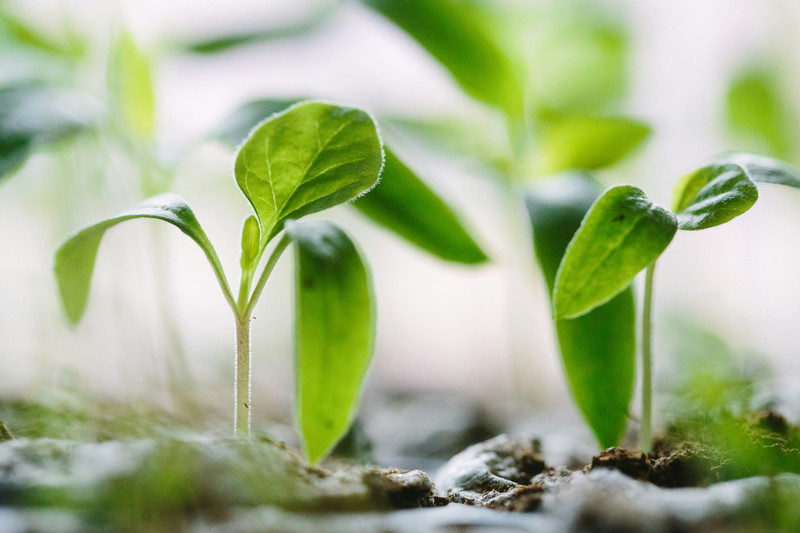Companion planting in Tasmania revolves around understanding the symbiotic relationships between different plants. Some plants, when grown together, can deter pests naturally, enrich the soil with essential nutrients, provide shade or support, and even improve the taste of their garden neighbors. This organic approach not only reduces the need for chemical pesticides and fertilisers but also promotes biodiversity in the garden.

Beneficial Companions for Tasmanian Edibles
- Tomatoes and Basil: This classic pairing is as beneficial as it is culinary. Basil repels flies and mosquitoes and is believed to improve the flavour of tomatoes. In Tasmania's mild summer, these two thrive side by side.
- Carrots and Spring Onions: Carrot fly is a common issue in many Tasmanian gardens. The strong scent of spring onions (scallions) can mask the scent of carrots, deterring the carrot fly. Conversely, carrots can help repel onion fly from the spring onions.
- Strawberries and Borage: Borage is a fantastic companion for strawberries, helping to deter pests while attracting beneficial pollinators. Additionally, borage can add trace minerals to the soil, which strawberries benefit from.
- Cabbage and Dill: Cabbage can be prone to several pests in Tasmania, but planting dill nearby can help attract beneficial wasps that prey on common cabbage pests. Dill also attracts pollinators that are beneficial for the entire garden.
- Lettuce and Chives: Chives can deter aphids, which are a common pest on lettuce, and their flowering heads attract beneficial insects. The mild Tasmanian climate allows for a long growing season for both crops.
Non-Beneficial Companions
While companion planting can be hugely beneficial for many plants, improving growth, deterring pests, and enhancing flavour, there are also instances where certain plants do not thrive when placed too close together. These incompatibilities can be due to a variety of factors, including differing water, light, and soil requirements, as well as allelopathy—a phenomenon where one plant releases chemicals that inhibit the growth of another. Here's a look at some plants that are known to dislike certain companions:
- Beans and Onions (including garlic, leeks, and shallots): Beans, both pole and bush varieties, are negatively affected by members of the onion family. Onions can stunt the growth of beans, as they release substances that beans are sensitive to.
- Carrots and Dill: While carrots enjoy the company of many plants, they don't do well with dill. Dill can attract carrot fly, and its roots can also interfere with the growth of carrots.
- Tomatoes and Cabbage Family (including broccoli, Brussels sprouts, cabbage, cauliflower, and kale): Tomatoes and members of the cabbage family are not compatible in the garden. They are both heavy feeders and can deplete the soil of nutrients at a rapid rate, leading to competition and poor growth.
- Cucumbers and Aromatic Herbs: Cucumbers are generally not friends with aromatic herbs such as sage. The strong scents of some herbs can deter cucumber pollination or affect their growth negatively.
- Potatoes and Tomatoes: Both being members of the Solanaceae family, potatoes and tomatoes are susceptible to the same diseases, particularly blight. Planting them too close together can increase the risk of disease spreading from one to the other.
- Asparagus and Garlic (or other alliums): Garlic and other members of the onion family can stunt the growth of asparagus. It's best to keep these plants separated in the garden to ensure the asparagus thrives.
- Peas and Onions (including garlic, shallots, and leeks): Like beans, peas do not do well when planted near onions because the alliums can inhibit the growth of peas.
- Strawberries and Cabbage: Strawberries and members of the cabbage family do not make good companions. Cabbage can stunt the growth of strawberries, and they can compete for nutrients.

Considerations for Tasmanian Gardeners
Climate: Tasmania's climate varies from coastal to mountainous regions, so consider your local microclimate when choosing companion plants.
Soil: Testing your soil and amending it based on the needs of your plants can significantly impact the success of your companion planting.
Watering Needs: Ensure that companion plants have similar watering requirements to avoid over or under-watering one plant in the pair.
Final Thoughts
Companion planting is an art as much as it is a science. While there are many suggested pairings, the best way to determine what works for your Tasmanian garden is through observation and experimentation. By fostering the relationships between different plants, gardeners can create a thriving, sustainable ecosystem that benefits both the environment and the dinner table.
Whether you're a seasoned gardener or just starting out, integrating companion planting into your garden can lead to a healthier, more productive, and more enjoyable gardening experience. Embrace the wisdom of companion planting and watch your Tasmanian garden flourish.

